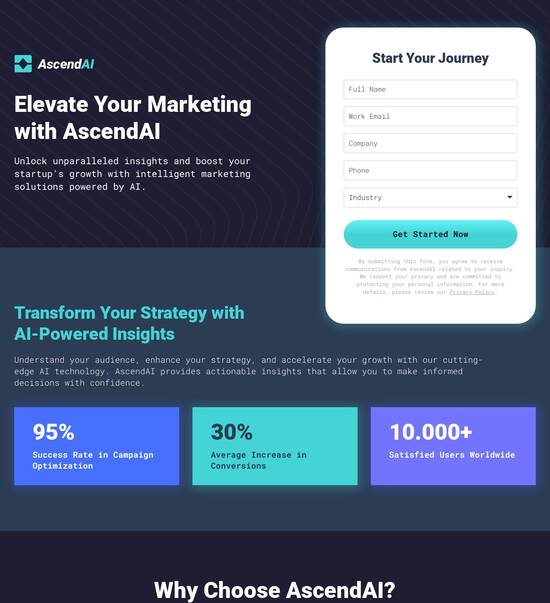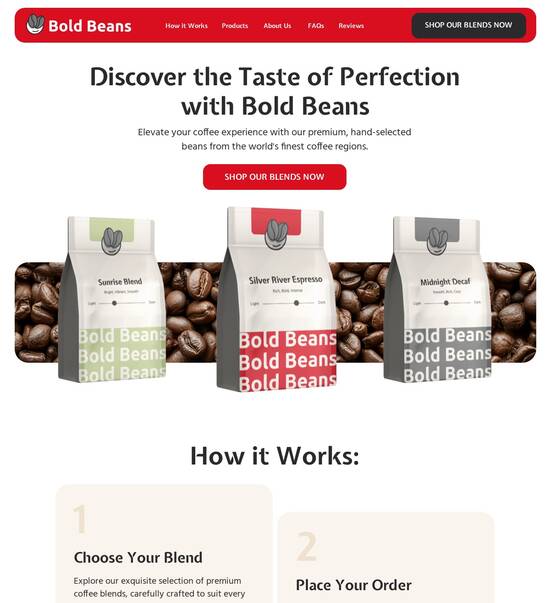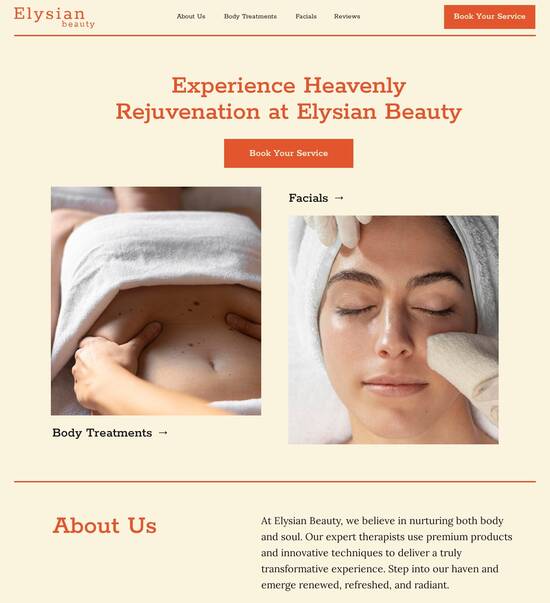
Laravel optimized social media platform template
Explore Similar TemplatesAbout template
Leverage our intuitive page builder and high-converting Laravel optimized social media platform template.
Recommended templates

Easy to build without coding
With the intuitive drag-and-drop builder, anyone on your team can create high-converting pages without any knowledge of code or design. Make enhancements to your landing page with custom widgets using Javascript, HTML/CSS, or third-party scripts.

Multiple layouts for any industry and goal
Select from 500+ landing page layouts built to boost conversions across industry-specific scenarios. Customize them by adjusting fonts, adding images, and generating on-brand content with the AI assistant. Quickly scale with Instablocks® and Global Blocks that you can save, reuse, and update globally.

Loads fast and looks polished on any device
Every template is responsive, which means they present professionally on any device and load blazingly fast with our Thor Render Engine. You can also power them up with Google AMP technology to deliver an unparalleled mobile experience and drive higher conversions.

Robust analytics & experimentation
Get real-time updates and reporting across all your devices, showing the number of visitors, conversions, cost-per-visitor, and cost-per-lead. Launch AI-powered experiments, run A/B tests, and use heatmaps to analyze user behavior, then optimize your landing page to maximize conversions.







Easy to build without coding
With the intuitive drag-and-drop builder, anyone on your team can create high-converting pages without any knowledge of code or design. Make enhancements to your landing page with custom widgets using Javascript, HTML/CSS, or third-party scripts.
Multiple layouts for any industry and goal
Select from 500+ landing page layouts built to boost conversions across industry-specific scenarios. Customize them by adjusting fonts, adding images, and generating on-brand content with the AI assistant. Quickly scale with Instablocks® and Global Blocks that you can save, reuse, and update globally.
Loads fast and looks polished on any device
Every template is responsive, which means they present professionally on any device and load blazingly fast with our Thor Render Engine.
Robust analytics & experimentation
Get real-time updates and reporting across all your devices, showing the number of visitors, conversions, cost-per-visitor, and cost-per-lead. Launch AI-powered experiments, run A/B tests, and use heatmaps to analyze user behavior, then optimize your landing page to maximize conversions.
All the features you need to build lead-generating landing pages
Explore more featuresLearn how to build top-performing landing pages for any goal
FAQs
Leading the way in building high-performing landing pages





Step-by-step guide to using Instapage for optimized landing pages
Elevate your digital marketing campaigns with Instapage, the leading landing page creation and conversion rate optimization (CRO) platform. With over 100 customizable templates and a straightforward interface, Instapage allows marketers across various verticals to quickly create high-impact landing pages that not only attract visitors but also drive conversions. This guide walks you through the essential steps to maximize your ROI through effective landing page strategies.
Understanding Instapage’s versatile features
Instapage offers a powerful suite of tools designed for marketers of all sizes. From pre-built templates to advanced optimization features, specializing in tools like A/B testing, personalization, and detailed analytics dashboards, every function is geared toward one goal: increasing conversions. These user-friendly features can lead to faster page creation with no need for coding expertise.
- Templates and lead generation elements: Access more than 100 ready-to-use templates which can be customized to capture leads efficiently.
- Flexible landing pages: Create pages without coding using Instablocks and a variety of conversion-focused layouts.
- Collaboration tools: Instantly share pages and feedback with your team or stakeholders for quicker revisions and deployment.
First step: Creating your landing page
To start building your landing page, select a template that aligns with your campaign goal. Utilize the drag-and-drop builder for a seamless construction experience.
- Choose a template: Filter through business-specific templates to find the perfect match for your campaign.
- Customize content: Use intuitive tools to personalize text and images that speak to your target audience.
- Add lead generation elements: Incorporate forms, buttons, and other interactive elements to encourage user engagement.
Second step: Optimizing for conversions
Once your landing page is live, the next crucial step is to optimize it. Use Instapage’s built-in experimentation features to determine what resonates most with your audience.
- Utilize heatmaps: Understand user behavior on your page to identify what attracts or repels visitors.
- Conduct A/B testing: Experiment with different layouts, CTA placements, and text variations to discover the highest converting options.
- Leverage analytics: Analyze visitor data to refine your strategy and improve upon the existing content.
Third step: Personalization and collaboration
Creating personalized experiences can significantly enhance user engagement. Use dynamic text replacement and AdMaps to align ads with customized landing pages tailored to specific audience segments.
- Dynamic content: Adapt landing page text to match the ad that brought the user there for a seamless experience.
- Collaboration in real-time: Use Instapage’s sharing features to allow team members to provide instant feedback and edits.
- Monitor performance: Utilize audience data to continually optimize for improved engagement and conversion rates.
By following these actionable steps within Instapage, marketers can transform their strategies, boost ROI, and create efficient landing pages tailored to their target audiences.
Ready to enhance your landing page strategy? Get started with Instapage today and unlock the potential for higher conversions with its powerful features tailored to your marketing needs.
People also ask about Laravel optimized social media platform template
Laravel optimized social media platform template
Understanding the Laravel optimized social media platform template
In recent years, the demand for social media platform development has surged dramatically. As businesses and individuals seek to create their own online communities, a robust and scalable framework is essential. Enter Laravel, a PHP framework known for its ease of use and comprehensive feature set tailored to meet these specific needs. This article explores the optimization of social media platforms using Laravel templates, focusing on key features, technologies, and future trends.
Introduction to Laravel as a framework
Laravel emerged in 2011 as a groundbreaking PHP framework aimed at simplifying the development process. Created by Taylor Otwell, Laravel introduced a coherent set of tools and conventions to streamline coding tasks. Its core philosophies emphasize simplicity, elegance, and efficiency, making it an attractive choice for developers. Over the years, the framework has evolved, adding features such as routing, ORM (Eloquent), and robust authentication systems.
Choosing Laravel for social media platform development carries significant advantages. The framework offers a wealth of built-in tools specifically designed for enhancing user experience. Particularly notable are its security measures, enabling developers to protect user data effectively. Additionally, Laravel’s architecture supports scalability, ensuring the platform can handle increased user loads without performance degradation.
Key features of the Laravel optimized social media platform template
One of the most integral features of any social media platform is user authentication. Laravel provides multiple systems for securing user access, such as Passport for API authentication and Socialite for social login options. This flexibility allows users to sign up using their existing social media accounts, simplifying the onboarding process.
Privacy settings are another critical component managed within the Laravel environment. The template can be designed to allow users to customize their content visibility settings, ensuring that posts are shared according to personal preferences. This level of control fosters user trust and satisfaction.
User Authentication: Secure access using Laravel Passport and Socialite.
Privacy Settings: Customizable options for users to manage content visibility.
Dynamic Content Management: Users can create, edit, and publish posts seamlessly.
Community Engagement Tools: Features like comments, likes, and shares to enhance interaction.
Core technologies powering the template
For a smooth user experience, implementing modern frontend technologies is crucial. Laravel templates can leverage JavaScript frameworks such as Vue.js or React to develop interactive interfaces. These tools allow developers to create highly responsive applications that keep users engaged through seamless interactions.
On the backend, Laravel’s Eloquent ORM plays a pivotal role in database management, providing a simple, intuitive interface for developers to handle data operations. The framework also incorporates highly effective queue management systems to manage notifications and messaging, ensuring users receive timely updates.
API integration represents another critical facet of a Laravel-driven social media platform. Developers can create RESTful APIs that facilitate smooth data exchanges between the frontend and backend, enabling the incorporation of third-party social media APIs. This integration can enhance user engagement through features such as cross-posting and content sharing.
Innovative features and functionalities
Advanced functionalities can set a social media platform apart. For instance, incorporating a Q&A section can facilitate user support and encourage community building. This setup not only allows users to ask questions but also enables others to provide structured and informative answers, enhancing interaction quality.
Location-based features can also be impactful. By enabling geotagging for posts and events, users can discover content relevant to their geographical area. This functionality encourages local community engagement and can drive user loyalty by connecting users with events and posts in their vicinity.
Advanced Q&A Functionality: Establish a dedicated space for users to ask questions and receive structured answers.
Location-Based Features: Geotagging for enhanced content discovery based on user location.
Content Discovery: Algorithms that suggest relevant content and connections based on user activity.
Developing and customizing your social media platform
The user profile structure can significantly influence user engagement. Profiles should include essential components such as a bio, profile picture, and recent posts. Developers have the option to incorporate features that enhance visibility, including mutual friends and follower counts, which can encourage social interaction.
Custom post formats and media integration are equally important. Users should have diverse options for content types, including images, videos, polls, and links. Enabling rich media elements can stimulate interaction and increase user engagement, setting your platform apart from competitors.
User Profile Structuring: Key elements that enhance profile representation and interaction.
Custom Post Formats: Provide options such as images, videos, and polls for diverse content creation.
Settings Management: Comprehensive options for users to manage notifications, privacy, and security.
Enhancing user experience: Design and usability
A platform's navigational structure plays a vital role in user experience. Effective navigation should be intuitive, allowing users to find relevant content quickly. Categorizing content can significantly enhance discoverability, ensuring that users spend quality time interacting with posts that interest them.
Mobile-first design is crucial in today's digital landscape. Given the increasing reliance on mobile devices for social media interaction, optimizing platforms for accessibility across a range of devices is vital. Utilizing frameworks that support mobile-responsive design ensures users receive a seamless experience, regardless of their chosen device.
User feedback mechanisms, such as surveys and forms, are essential for understanding user perspectives. Gathering feedback allows developers to make informed decisions regarding updates and feature additions, aligning the platform more closely with user needs. Regularly soliciting input keeps users engaged and fosters a sense of community.
Building sustainable communities within the platform
Sustaining an interactive community requires deliberate strategies. Increasing post visibility through unique features can enhance user interaction. Promotional strategies, like gamification elements, can further motivate users to engage more actively, creating a vibrant community atmosphere.
Moderation and effective community guidelines are crucial in managing user-generated content. Establishing clear community standards helps mitigate negative interactions while promoting positive discourse. Tools for moderation assist in maintaining community integrity and fostering a safe environment for discussion.
Encouraging Interaction: Strategies to enhance post visibility and promote user engagement.
Moderation Tools: Implementation of community guidelines and moderation protocols.
Administration Settings: Tools for team management and task delegation within the platform.
Addressing common challenges in social media development
Data privacy and security remain paramount concerns in social media development. Compliance with regulations such as GDPR and CCPA is essential to protect user data. Implementing best practices for encryption and secure storage is crucial to ensure user confidence in the platform.
Additionally, balancing user engagement with content quality is a challenge. Developers must build algorithms and moderation tools that discourage misinformation and spam, promoting a healthier online environment. Initiatives such as user reporting mechanisms can empower the community to help maintain quality standards.
Data Privacy: Compliance with regulations and best practices for data security.
Content Quality: Strategies to combat misinformation and spam on the platform.
Scaling Solutions: Techniques for load balancing and caching to manage platform performance.
Future trends in social media development
Looking ahead, the rise of decentralized social media platforms is gaining traction. These platforms seek to empower users by eliminating central control, fostering a sense of ownership. While decentralized solutions offer benefits, they also present challenges in moderation and community management.
The integration of artificial intelligence and machine learning is another exciting frontier. These technologies can provide significant advantages in content moderation and user interaction. By analyzing patterns and activities, AI can tailor user experiences, making them more personalized and engaging.
Decentralized Platforms: Explore the benefits and challenges of decentralizing social media.
AI and Machine Learning: Leveraging technology to enhance user interaction and moderation.
Evolving User Expectations: Adapting platforms to meet changing preferences and behaviors.
Summary of benefits of using Laravel for social media platforms
In conclusion, utilizing Laravel to develop social media platform templates offers an efficient workflow, thanks to its extensive built-in features. The powerful community surrounding Laravel ensures developers can find support and resources to troubleshoot issues swiftly. Built for long-term scalability, Laravel enables developers to adapt platforms according to evolving technologies and user requirements.
Efficient Development Workflow: Speed up development cycles with Laravel’s built-in features.
Robust Community Support: Leverage Laravel’s community for collaboration and troubleshooting.
Long-term Scalability: Adapt the platform to keep pace with technology and user needs.
Ready to skyrocket conversions?
Supercharge your ad campaigns with high-performing landing pages
Get started














